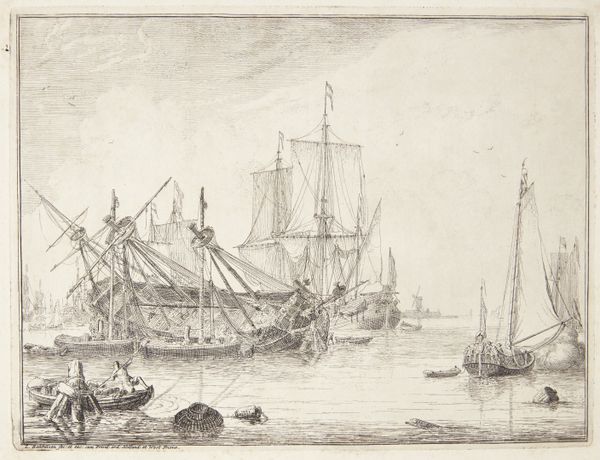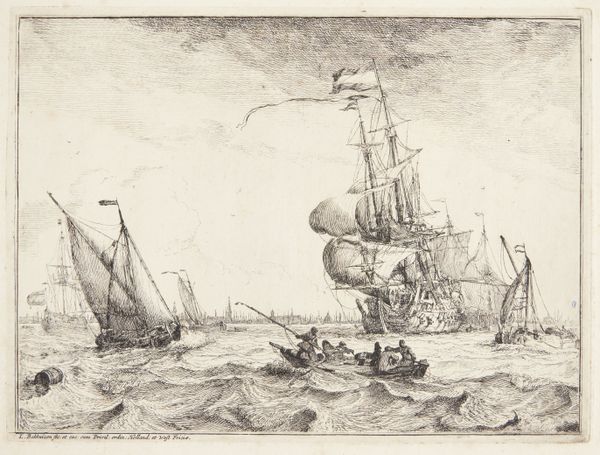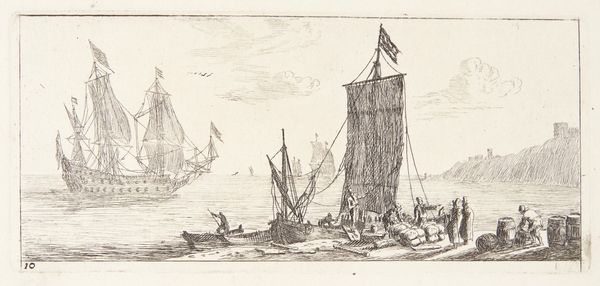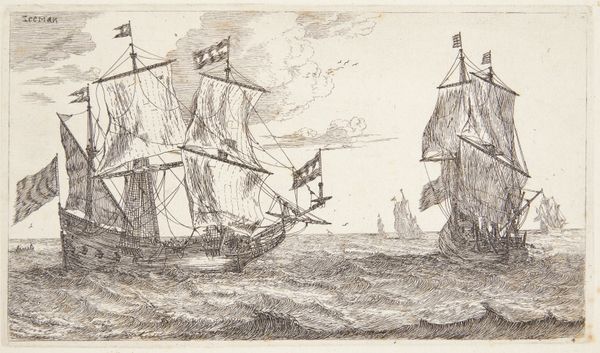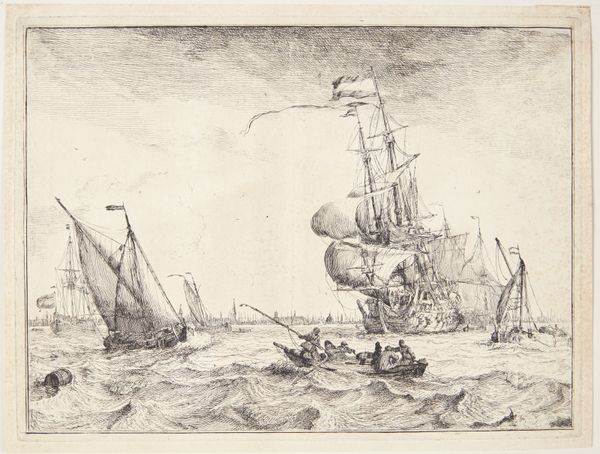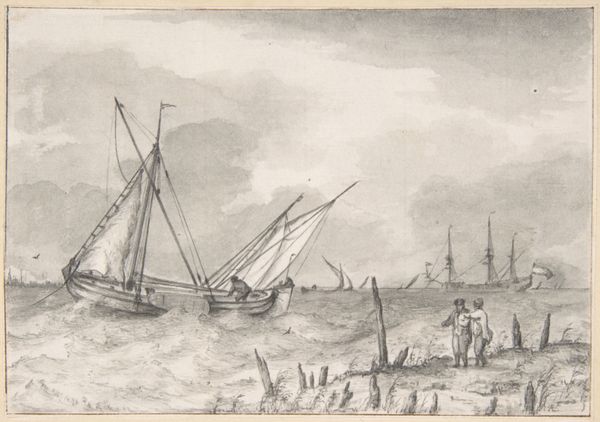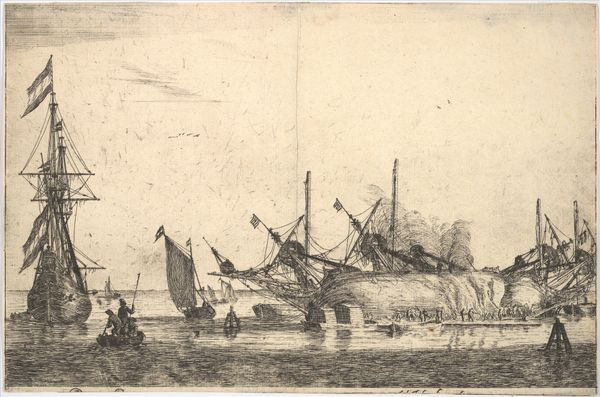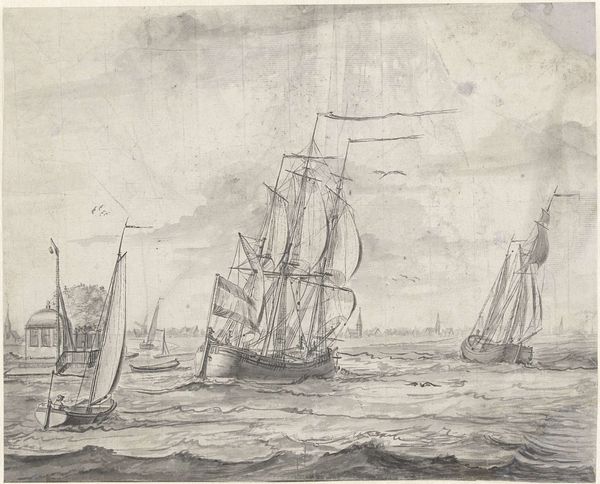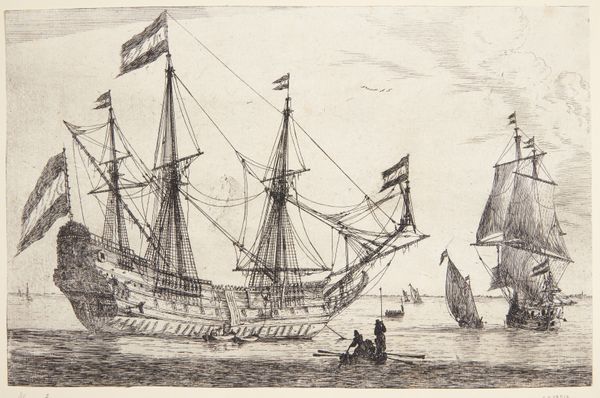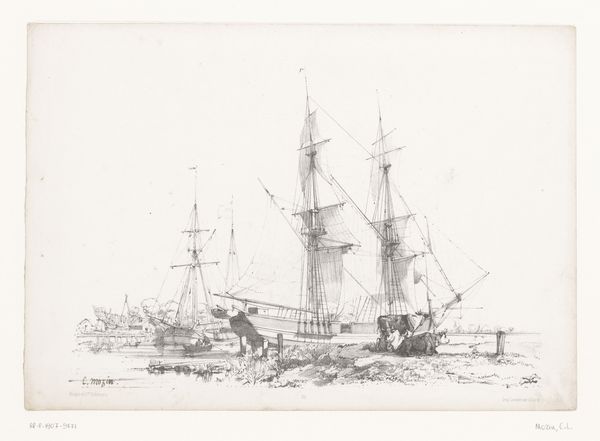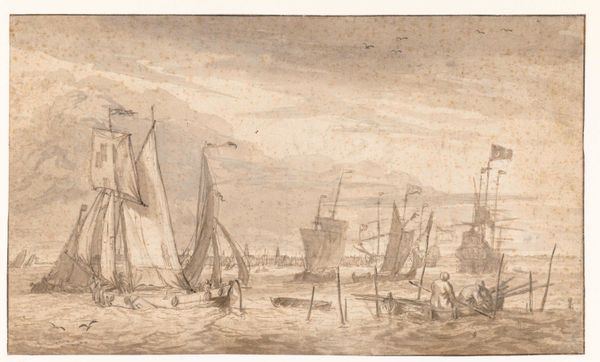
Orlogsfartøj og sejlskibe ud for den hollandske kyst 1701
0:00
0:00
print, etching
#
dutch-golden-age
# print
#
etching
#
landscape
#
genre-painting
Dimensions: 177 mm (height) x 238 mm (width) (plademaal)
Curator: Here we have "Orlogsfartøjer og sejlskibe ud for den hollandske kyst," or "Warships and sailing ships off the Dutch coast," created by Ludolf Bakhuizen in 1701. Editor: It has such a strong feeling of being on the water. You can almost feel the salt spray and the rocking of the waves, rendered in precise, delicate etching. Curator: Absolutely. Bakhuizen was known for his marine paintings and prints. This particular etching speaks to the power and prosperity of the Dutch Republic at the turn of the 18th century, heavily reliant on its naval fleet and trade. What kind of messages did nautical domination send in those days? Editor: The imagery communicates a deeply gendered, and racialized power dynamic, doesn't it? The warship sails bearing flags implying Dutch imperial power over colonized peoples and trade routes across the seas. What might it have meant to a marginalized person observing these ships, either on land or forcibly sailing them? The scale here underscores both control, and potentially vulnerability within that system. Curator: It's impossible to separate maritime art from the socio-political forces that shaped its creation and reception. Even seemingly straightforward depictions of ships carry significant symbolic weight. It’s not just a picture of boats on the water; it's an assertion of dominance and an enactment of geopolitical narratives. It can even invite debates on issues of global economics then and today, and whether they benefit or hurt the majority of world citizens. Editor: Yes. By studying Bakhuizen, we can begin questioning assumptions. Looking critically, even pleasant maritime art allows an exploration of power dynamics encoded within imagery, prompting much-needed re-evaluation. Curator: Examining the power, symbolism, and historical impact enriches understanding immeasurably. Thanks for adding such insightful context to our perception. Editor: My pleasure. It all comes back to interrogating representation, and recognizing that art always reflects broader struggles.
Comments
No comments
Be the first to comment and join the conversation on the ultimate creative platform.
